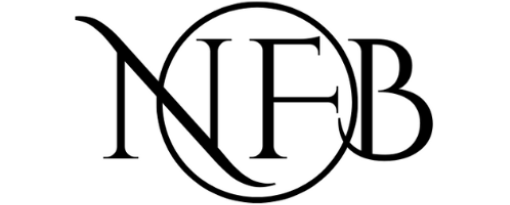Nonfiction is one of the most read and familiar genres of books. Even non-reads are well-clear about nonfiction books and their purposes. Every book, even the nonfiction ones, has its stories. Either they’re about future challenges and purposes or about the events and places that scream volumes of legacies and pride.
Nonfiction books have always played a great role in human development and evolution, and they will continue to play the lead. Why don’t we start reading and get into the world when it’s not always about us but rather about great people and histories to remember?
A list of best nonfiction history books is up, and you could use them to get into the realm of nonfiction histories that are closely forgotten. Let’s get started.
List of Top 13 Non-Fiction History Books in 2024
The People's History Of The United States By Howard Zinn, 1980
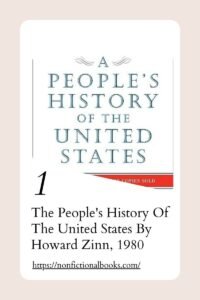
“A People’s History of the United States” by Howard Zinn was released in 1980 and created a buzz around the United States. “A People’s History of the United States” is a strong novel that talks about different narratives of the US. The book was criticised by many for the exaggerated point of view of different narratives. Still, the author was then claimed to have written from the view of the oppressed.
The book starts with Christopher Columbus and starts to accelerate through some of the key events in history. These events include the American Revolution, the Civil Rights Movement, and the Civil War.
Howard Zinn has keenly focused the book on oppressed people like slaves, women, employees, workers, and native Americans who were struggling to cope with their identities and inhabitation at that period. The book talks volumes about their tolerance and resistance towards their enemies and oppressors. Also, nothing stopped Zinn from writing about the people who were usually omitted from any historical records. These atomic records contributed to our understanding of American history from the shoes of the omitted population.
This book is a powerful account of hidden narratives and the transformation of the United States. Starting from a powerful American history would be a good choice.
Sapiens: A Brief History Of Humankind By Yuval Nova Harari
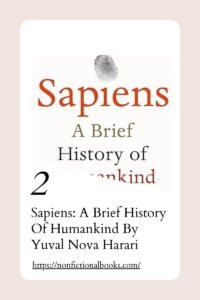
“Sapiens: A Brief History of Humankind” by Yuval Noah Harari is a nonfiction historical book released in 2001. As the book title says, the book starts with the emergence of humankind, which is called “Homo-Sapiens.” Readers start from the very beginning of humankind and read through the process of evolution. It talks about every approach, aspect, and advancement of human evolution and how things have shaped us into what we are today.
The book is divided into four parts, namely the cognitive revolution, the agricultural revolution, the unification of humankind, and the scientific revolution. These parts basically represent different eras of evolution and development.
The book is written in such easy language that anyone can read it and understand. Even though it contains scientific concepts and subjects like biology, geography, history and all, Harari hasn’t failed himself while making them all easily understandable to the common public. It talks about facts, myths, and even common assumptions in a way that intrigues the reader.
The book covers almost all concepts of life, including capitalism, economy, totalitarianism, technology, and many more. One of the best historical books ever written in history.
"The Diary of a Young Girl" by Anne Frank
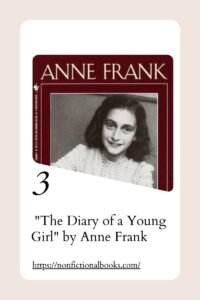
“The Diary of a Young Girl” by Anne Frank was released in 1947. This isn’t just a historical nonfiction book but also a piece of a historical record that’s being preserved by countries. This book is not just a book but a diary of a young girl during the Nazi occupation of the Netherlands. The young girl is Anne Frank, a 13-year-old Jewish trapped in the oppression of Adolf Hitler.
Anne Frank starts this diary very young when she doesn’t have any idea of how her life could turn in her future. While writing the diary, she wouldn’t have ever thought that this diary was going to make her an incredible personality in the pages of history.
Anne Frank continued to write her diary when they were hiding in the secret annex to save themselves from the Nazis, making this novel a historic document. She has written about their food, sleep, ration, how the outside world was revolving, and many minor details of that period that went unnoticed by journalists and historians.
In 1945, Anne Frank was liberated from the concentration camp, after which her father released this diary to the authorities. They were looking for any evidence or record of the holocaust, and Anne’s diary played a great role in it. The book was sent for several moderation and sensor checks and then released as a war document for the public to read.
The Diary of a Young Girl by Anne Frank is such an emotionally overwhelming book that lives in the hearts of the readers forever.
The Last Mughal By William Dalrymple
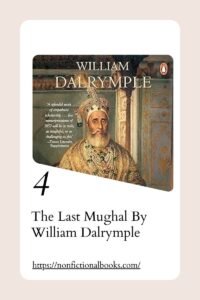
“The Last Mughal: The Fall of a Dynasty, Delhi 1857” by William Dalrymple was written and released in 2006. It’s a historical non-fiction book revolving around the ending of the Mughal Empire. The book mostly talks about the final years of the rulers and the fall of the Mughal Empire, accounting for the events of the Indian rebellion of 1857.
As the last ruler of the Mughal Empire, Bahadur Shah || holds a great space in this book. He is remembered for his attempts to break British rule over India. As it’s located in Delhi, the novel talks about the political, economic, social, and cultural customs and heritages of Indians in the city of Delhi. This is one of the wholesome novels to learn about cultural practices and historical legacies of Indian history and the Mughal Empire. The point of view of Dalrymple in this book is very distinct and acceptable. He doesn’t talk about Bahadur Shah|| as a better ruler as he was the reason for the fall of the Mughal Empire; rather, it projects him as a vulnerable king who was caught up in his mind more than in the lives of his people.
While writing this book, there has been a great use of all the historical accounts like letters, newspapers, diaries, reports, etc, which makes this book one of the best of its kind. The book doesn’t forget to talk about the aftermath of the Mughal Empire and the Indian future. It also places profound statements about India’s possible future after the end of the Mughal Empire.
If you’re looking to read an Indian non-fiction history book, then this would be a great choice to start from.
The Origins Of Totalitarianism By Hannah Arendt
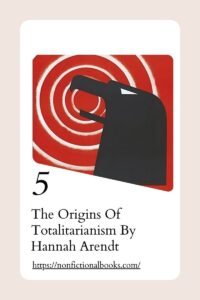
“The Origins of Totalitarianism” by Hannah Arendt was written and released in 1951. The book talks about totalitarianism which was starting to peak when this book was being written. It explains totalitarianism in the 20th century with political adversities and historical records.
The book starts with historical transformation and accelerates through the process of totalitarianism as an evolution starting from Europe. The book has a dominant narrative of authoritarian rule and rulers. Then, we get an account and declaration of imperialism along with the bad side of colonialism in Europe. Arendt talks more about the displacement of the public, who were declared stateless during colonialism in Europe.
Hitler and Stalin have also been talked about in this novel as they are two of the most impactful personalities of the world, especially in Europe, Germany, America, and Russia. Arendt explains how totalitarianism impacts a country and its people and how it has pushed the public to divide among themselves. The insecurities, isolation, and loneliness of a community during this process of totalitarianism are well explained and understood in this novel. The book also talks about how important it is to remain equal for everyone rather than getting stripped out of everything constituting oneself.
This novel is a real account of the social, economic, and political violation of interdisciplinary lifestyles. This is one of the best nonfiction novels that talks great volumes about imperialism, colonialism, and totalitarianism in this period. If you’re looking to read a real-life, nonfiction book just like 1984, then this is exactly what you need to pick up!
Caste: The Origins of Our Discontents
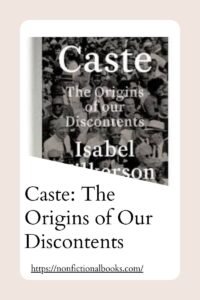
Caste is one of the non-fiction history books that has also received a major award winner and critical darling, which sheds light on the hidden aspects of American society. In her book, Wilkerson describes caste as a dark theatre where an unseen usher guides everyone to their pre-assigned seats. Moreover, a powerful, unspoken caste system determines the person’s social place. This place in society is not defined by the person’s feelings or character but by cold and hard power.
In her non-fiction history book, Wilkerson argues that a person’s race, class, and caste can narrate his or her whole story. Moreover, he says that America has a hidden caste system, which has a rigid hierarchy. The hierarchy shapes people’s lives and the country’s destiny. The system discussed above and in Wilkerson’s book is not unique to Americans. Moreover, in the book Caste, Wilkerson also explores the Indian caste system followed by the Nazi or German Cast System.
Through real-life stories, Wilkerson has placed eight key ideas in front of us. Moreover, she discussed the role of castes in everyday life. These real-life stories mentioned in the book caste state the hidden problems of caste. Moreover, in this book, we learned how a nazi studied America’s racial systems to plan their persecution of Jews.
Caste is one of the non-fiction history books which has also received a major award winner and critical darling, which sheds light on the hidden aspects of American society. In her book, Wilkerson describes caste as a dark theatre where an unseen usher guides everyone to their pre-assigned seats. Moreover, a powerful, unspoken caste system determines the person’s social place. This place in society is not defined by the person’s feelings or character but by cold and hard power.
In her non-fiction history book, Wilkerson argues that a person’s race, class, and caste can narrate his or her whole story. Moreover, he says that America has a hidden caste system, which has a rigid hierarchy. The hierarchy shapes people’s lives and the country’s destiny. The system discussed above and in Wilkerson’s book is not unique to Americans. Moreover, in the book Caste, Wilkerson also explores the Indian caste system followed by the Nazi or German Cast System.
Through real-life stories, Wilkerson has placed eight key ideas in front of us. Moreover, she discussed the role of castes in everyday life. These real-life stories mentioned in the book caste state the hidden problems of caste. Moreover, in this book, we learned how a nazi studied America’s racial systems to plan their persecution of Jews.
The Wager: A Tale of Shipwreck, Mutiny and Murder

This non-fiction history book consists of one of the incredible and true stories of a British warship called the Wager. In 1740, during a war in Spain, the ship named Wager set sail on a secret mission, which was to capture a treasure ship. But due to a disaster, the ship wrecked on a deserted island which was off the coast of South America.
After a few months of being stranded and barely able to survive, the group of 30 sailors somehow managed to build a small boat. Using the small ship, they sailed for more than 100 days across a dangerous sea. They traveled miles before they reached a part of Brazil. There, they were hailed as heroes. But the story took a very shocking turn when, six months later, another boat arrived in Chile with only 3 survivors, with a different story. They stated that the 30 men were not heroes but mutineers who had overthrown their captain.
With accusations of betrayal and murder hanging in the air, a court martial was held to determine the truth about the scenario. The stakes were high, and whoever was found guilty would be sentenced to death.
This non-fiction history book is full of a thrilling and true adventure that explores human behavior in extreme situations. Written by one of the famous authors who is known for his captivating stories, the story is a mix of excitement of sea adventures and a suspenseful courtroom drama.
The Splendid and the Vile: A Saga of Churchill, Family, and Defiance During the Blitz
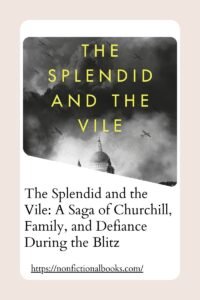
The Splendid and the Vile: A Saga of Churchill, Family, and Defiance During the Blitz, a non-fiction history book tells the dramatic story of Winston Churchill’s first year as a British prime minister during the period of World War II. When Hitler’s army conquered Europe, and Britain was next on his list, Churchill became the Prime Minister of Britain. Over the next year, Hitler launches relentless bombing campaigns over Britain, causing many deaths and destruction.
Moreover, this non-fiction history book is all about Churchill, who led Britain in the dark times. He had to rally the country to fight back and convince the American leader to be their ally. However, the book is not just about the big battles and speeches conducted in Britain, but more about the personal life of Churchill during the war. While reading this book, we came to know about his wife Clementine, their daughter, Mary, and son Randolph. Moreover, we were able to learn about some secret love affairs and hidden messages in the book.
This story is about bravery, family, and how a strong leader can make a difference in the face of danger. Moreover, it is a reminder of how vital courage and hope can be, even in tough times.
The Five: The Untold Lives of the Women Killed by Jack the Ripper
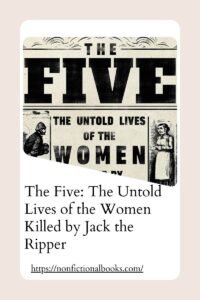
This non fiction history book tells the true stories of the five women who lived a very tragic life in the year 1888. Even though the women have never met each other, the reason they are remembered even today is the same: a mysterious murder. This book is about the victims of the murder mystery, the five women named Polly, Elizabeth, Catherine and Mary-Jane. Moreover, they come from different places and have different lifestyles. The woman never came to light, but their killer got more fame because of the fancy name given to him by the newspaper writer. This book brings awareness towards the five women, the rights of women and the stories of the women who were more than just victims.
Crossing the Bay of Bengal: The Furies of Nature and the Fortunes of Migrants
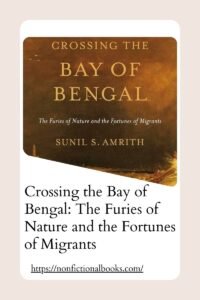
The non-fiction history book Crossing the Bay of Bengal takes us into the exciting history of the Bay of Bengal, which makes it the centre of attraction for first-timers. Moreover, it tells the thrilling history of the people who lived there and how the environment shaped their lives. The book discusses the Bay of Bengal, which was a highway connecting India and China by sea a long time ago.
Moreover, later, European countries fought to take over the area. Millions of people from India have even crossed the bay in search of a better life, which has created a mix of cultures in big port cities. But all of this changed in the year 1930 when the Bay of Bengal was disconnected. This book is more about the fascinating past of the Bay of Bengal.
Beyond the Lines: An Autobiography
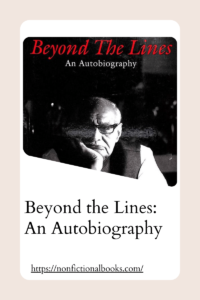
This non-fiction history book is Kuldip Nayar’s autobiography, which offers a unique perspective on Indian History. Growing up in Sialkot, he witnessed the tragic collapse of Hindu-Muslim trust, which led to partition. Moreover, he was forced to migrate to Punjab, and his story became intertwined with the birth of a new nation.
Nayar’s journey in this non-fiction history book begins with his escape and first steps as a young journalist with Urdu daily Anjam. His career progressed as he became the head of India’s premier news agency, UNI. Moreover, this is not just the story of Kuldip Nayar but also Indian journalism.
This non-fiction history book is filled with Nayar’s personal experiences of meeting Dr APJ Abdul Kalam Khan to his close association, Indian Prime Minister Lal Bahadur Shastri, and how can we forget the social reformer, Jayaprakash Narayan.
India's Wars: A Military History 1947-1971
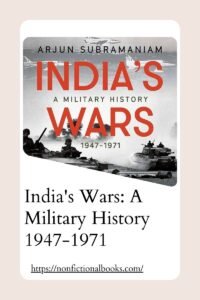
Air Vice Marshal Arjun Subramaniam’s Non-fiction history book, named Indian Wars, shines a light on the crucial aspect that is often overlooked in the standard accounts of Indian history. Moreover, he begins by tracing the evolution of India’s armed forces and then gives us details about narratives of significant conflicts that emerged due to independence in 1971. This Non-fiction history book includes the India-Pakistan war held in the year 1947-1948, followed by the liberation efforts in Hyderabad and Junagadh. Not only these but also the campaigns to reclaim Goa In 1961 and the intense wars between China and Pakistan.
Mr Arjun Subramaniam does not give a dry narrative about the recollection of events, but it vividly captures the experience of veterans during combat operations. In this nonfiction history book, Air Vice Marshal skillfully mentions the strategic, operational, tactical, and human aspects of war. Moreover, he offers us a comprehensive and engaging perspective on modern Indian history.
Military History Of The Sikhs: From The Battle Of Bhangani To The World War II
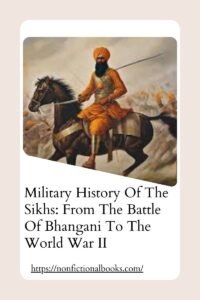
This Non-fiction history book traces the remarkable transformation of the Sikhs from a peaceful community to a formidable military power over three centuries. It begins with the battles fought by Guru Gobind Singh, even before the creation of the Khalsa, the Sikh warrior order.
The narrative then dives into the period of intense persecution faced by the Sikhs. It explores their innovative war tactics, inspired by swift, decisive attacks (think blitzkrieg!), that helped them build a strong military force. This newfound strength ultimately challenged the mighty Afghan leader, Ahmad Shah Abdali.
The Nonfiction history book delves deeper into the rise and fall of the Sikh Misls, independent Sikh chieftainships. It sheds light on lesser-known battles against the Marathas and Rohillas.
Finally, we witness the glorious rise of the Sikh Empire under Maharaja Ranjit Singh’s visionary leadership. The text details the exploits of his exceptional generals, like Hari Singh Nalwa and Akali Phoola Singh, who expanded the empire’s borders from Khyber Pass to Aksai Chin. The book even recounts the daring expedition of Zorawar Singh, who unfurled the Khalsa flag amidst the Himalayan heights of Tibet.
Conclusion
There are hundreds of non fiction history books that could be eye-opening to youngsters. In order to understand our present and draft our future, it is crucial to know the past. Novels like those mentioned in this blog by Non Fictional Books make it easier and healthier for people to read and understand what freedom, economy, country, society, culture, totalitarianism, imperialism, and colonialism actually mean to humankind. We need to be prepared in all subjects of knowledge to move forward with a vision to develop our country or at least our health. We hope the novels mentioned above will be helpful in your future endeavors! If you want to read more non-fictional books, try these most inspiring biographies of all time.
